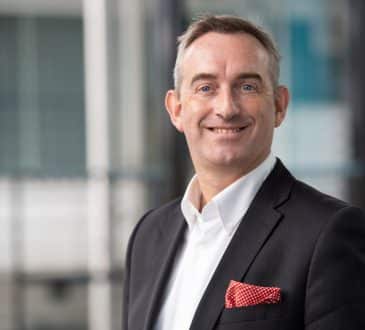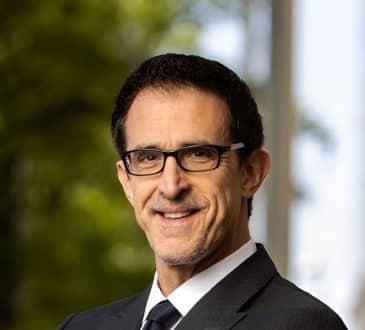4 Marketing Risks Taken in 2019 and What We Learned from Them

The year is almost over, and brand marketers all over the world are thinking about what the next decade will bring. But before we get too far ahead of ourselves, let’s take a moment to reflect on the year we’ve had. As consumers evolve, brands have been trying to follow their evolution through bold marketing moves and risks.
In 2019, many brands have taken risks worth discussing. Let’s take a look at some of the hits and misses of the year:
Carlsberg “Probably not the Best Beer”
In case you didn’t know, Carlsberg is a Danish brewery group that has Carlsberg lager as its flagship product. If you’re promoting the crown jewel of your global portfolio, you’d want to do it respectfully. Most marketers would spend time talking about how high the quality of the product is.
For marketers from Carlsberg, they took the expected approach and flipped it on its head. It started with retweeting tweets and making videos featuring tweets that agreed with one concept: the beer tastes bad. That’s pretty unusual behavior for a brand. These tweets were followed up by digital, out of home, and social placements claiming that Carlsberg is “probably not the best beer in the world.”
These self-deprecating marketing tactics did serve a positive purpose. You see, the company was going through a rebrand for its lead product this year. This rebrand included a change to the recipe. It is still too early to tell if it was worth the risk long-term, but it definitely created a lot of buzz!
Some brands are afraid to be open and honest with consumers. There is a difference between being transparent and showing how the sausage is made, especially if doing so makes the brand look bad. But where Carlsberg captured attention is by being authentic with their honesty. The company said that they came to the realization that they weren’t fulfilling their brand promise. By showing consumers the strides they are taking to improve, they are saying to consumers they are a brand they can feel good about enjoying again.
Rebranding is a natural part of business, but that still means the public must be made aware. If your company, brand or product is about to rebrand, think about ways awareness marketing can take risks and stand out in the service of your new image.
Gillette “The Best Men Can Be”
I can’t talk about marketing risks taken in 2019 and not mention Gillette’s “The Best Men Can Be” ad. In recent years, many brands have tried to jump on the social consciousness trend. After all, it is what consumers want, right? The men’s grooming brand thought so, and they came up with this: https://www.youtube.com/watch?v=koPmuEyP3a0
On paper it would have been a home run. A major brand taking a stance on social causes worked well for Nike. But what happened was months of controversy and financial hits. Although people were talking about the ad, the conversation was largely negative. The ad also didn’t stop the brand’s financial slide; parent company P&G wrote down the value of the brand by $8 billion dollars. Although the ad cannot be blamed for these losses, it didn’t mark the start of making them better.
Knowing who your brand is and its audience is knowledge that needs to be kept top of mind. Companies like Nike and Patagonia have built their brand on values that are disruptive. Their marketing moves may be controversial at times, but they are always in line with their beliefs, which is something their fans love.
Gillette has not spent years building and maintaining a brand on a message of environmental or social change. For its fans across the globe, it came as a shock to the system. Many felt the campaign was patronizing.
Although Gillette may currently believe in this new message, it does not appear to resonate with their core audience. Remember that you may produce brand messages, but what the brand means to people is ultimately out of your hands. If taking on a potentially controversial cause is what your brand believes in, that’s okay. But try to understand how to deliver the message in a way that won’t alienate your audience.
Burger King “Milkshake Tweet”
An English politician was making a trip to Edinburgh this fall. Normally this wouldn’t be newsworthy., butut this particular visit was made during a time when some politicians were getting doused with fast food milkshakes by protesters.
A McDonald’s in the Scottish city decided not to sell milkshakes or ice cream during the political visit. Burger King decided to send a tweet it claims responds to its rival’s decision, reminding customers that they are still selling their dairy items and to “have fun.” Many people were not fans of the message, including the Advertising Standards Agency.
As the ASA came out against the tweet, Burger King defended their actions, however in the end the tweet was banned, as it was found to incite antisocial and violent behavior.
The old unwritten rule says money, religion and politics are topics to avoid in conversation, and that applies to marketing. The tweet may not address politics directly, but it didn’t have to considering the context of the situation. A funny response to a competitor’s actions were taken to mean something different for consumers.
Whatever side of the political spectrum your personal beliefs fall on, avoid imparting these feelings onto your brand, especially if it seems to condone violence against others. Doing so can open up Pandora’s box of controversy that does not go away easily.
Doritos “Anti-Branding”
Can branding be done by removing branding? It sounds counterproductive. If you want audiences to know who you are, they need to be able to see who you are. Spending big dollars to put out messaging that removes the brand is not good strategy. The marketers at Doritos begged to differ.
In late August of this year, Doritos launched their “Another Level” campaign. This campaign was timed with the 2019 MTV Video Music Awards, one of the biggest award shows of the year. Unlike other campaigns and ads seen during the event, this one removed all mention of the snack food’s name, leaving behind the product’s triangle shape. This was as true for its YouTube “Anti-Ad” as it’s new “@Logo_Goes_Here” Twitter handle. It was an interesting move that grabbed headlines and attention.
Why did this approach work? There were a few reasons, including some of the lessons I’ve talked about here. The brand knew their target audience well. Generation Z is revered by many marketers, but research says the desire is not mutual. Knowing that Gen Z is not a fan of advertising or logos being plastered everywhere, Doritos gave them what they want. The brand spoke to their target in the terms that resonate best with them.
Removing your brand’s logo is risky, but one that is mitigated by brand recognition. The snack giant placed their bets on one fact: the shape and flavors of their product are so recognizable that they don’t need their name or logo to be identified. And it turns out they were right. Could this campaign work with a brand with less market share? Probably not. As a marketer, you should always be knowledgeable about the level of recognition your brand has with its audience.
The fun part of branding and marketing is seeing what can be pushed. What risks can we take? While we believe in taking risks and being disruptive at 121, it must come from a place of authenticity. Take chances that are believable, ones that make sense for your brand and audience. With careful planning and the lessons here, your brand can take shots that are risky, yet worth taking.
Written by Francisco Serrano.
Have you read?
The World’s Most Powerful Militaries.
Top Rated Visitor Attractions In Every Country In The World.
World’s Top 100 Cities To Reside In.
Best Websites For CEOs, Senior Executives, And entrepreneurs.
Best Countries For Business In Europe For Non-European Investors.
Bring the best of the CEOWORLD magazine's global journalism to audiences in the United States and around the world. - Add CEOWORLD magazine to your Google News feed.
Follow CEOWORLD magazine headlines on: Google News, LinkedIn, Twitter, and Facebook.
Copyright 2025 The CEOWORLD magazine. All rights reserved. This material (and any extract from it) must not be copied, redistributed or placed on any website, without CEOWORLD magazine' prior written consent. For media queries, please contact: info@ceoworld.biz











